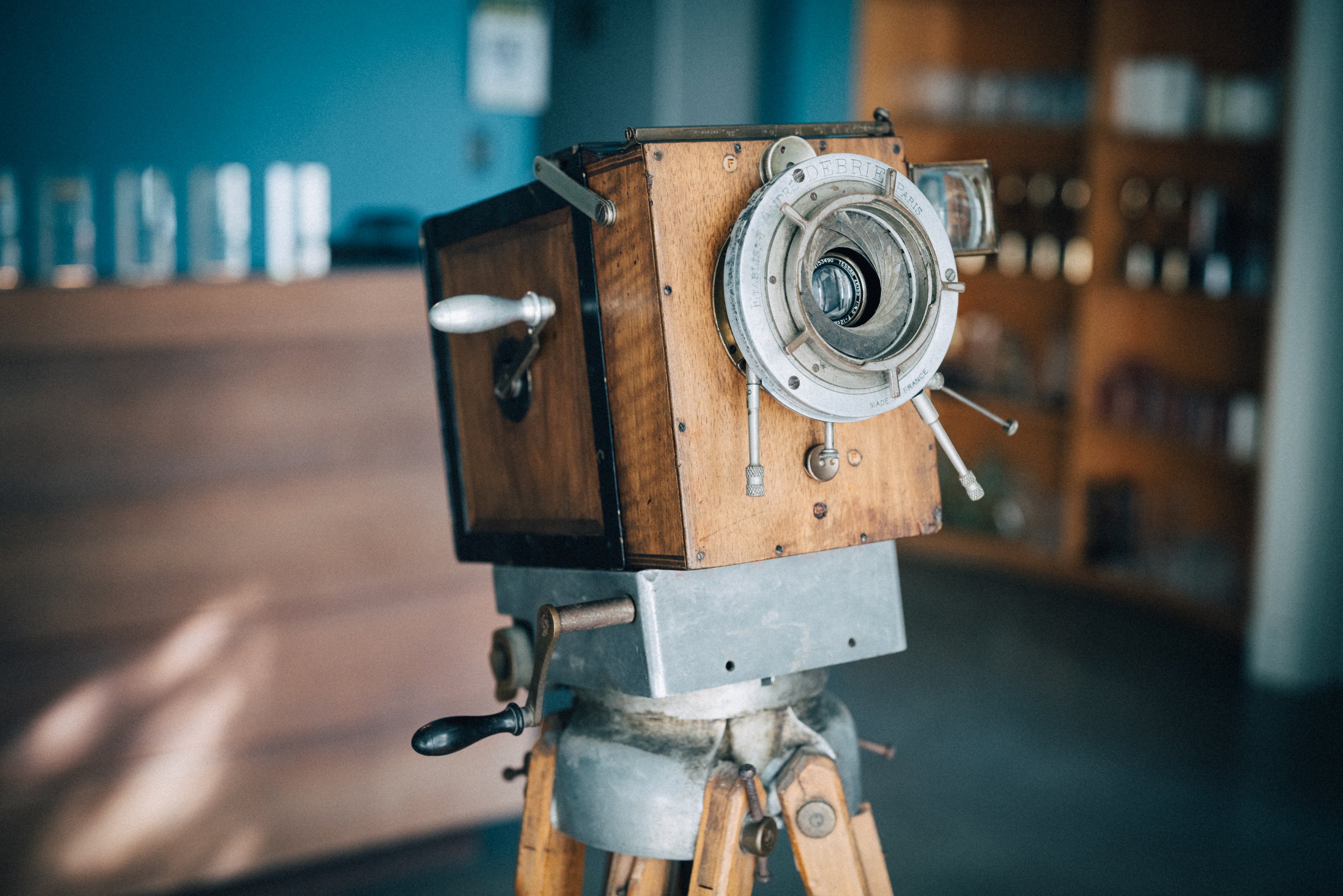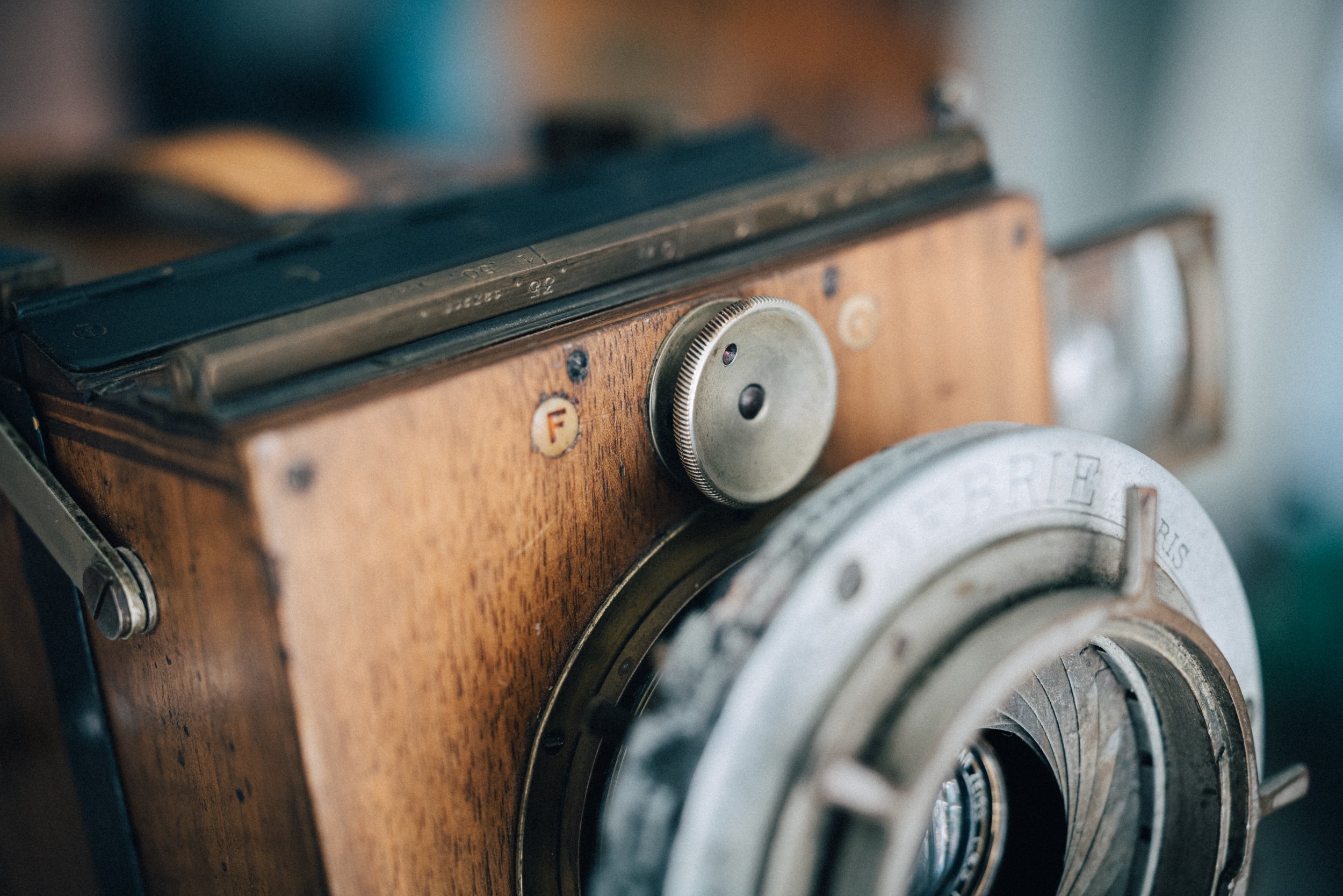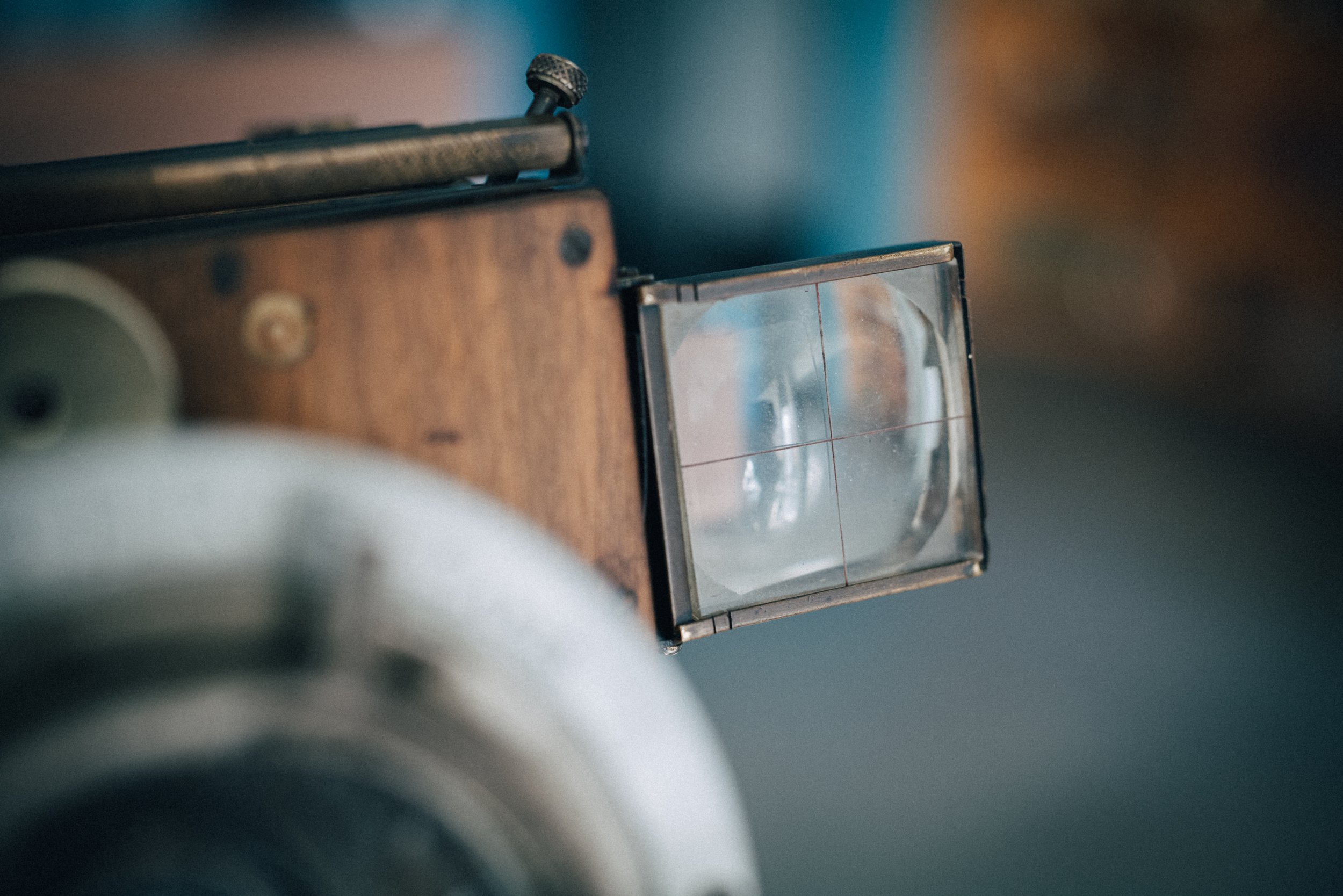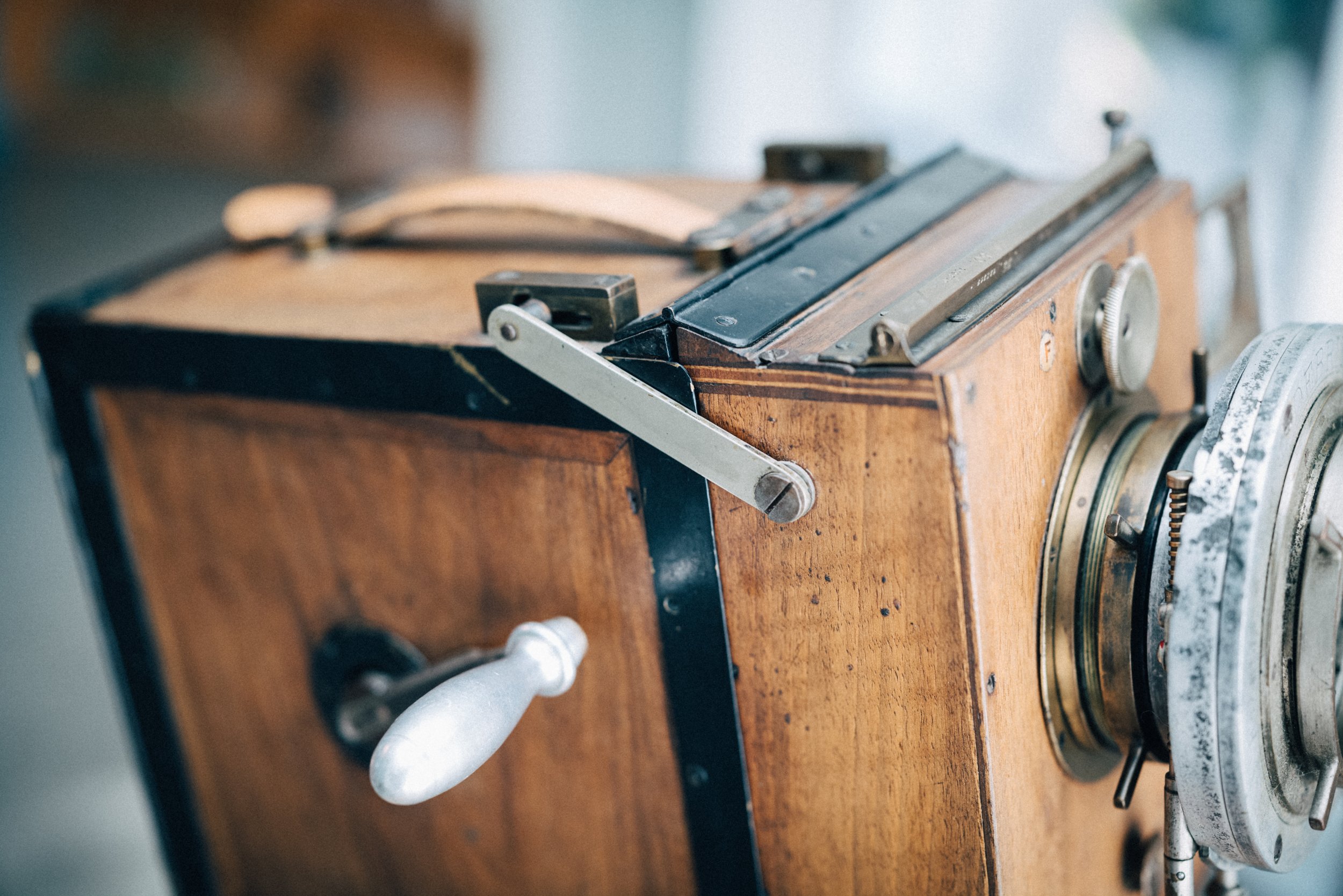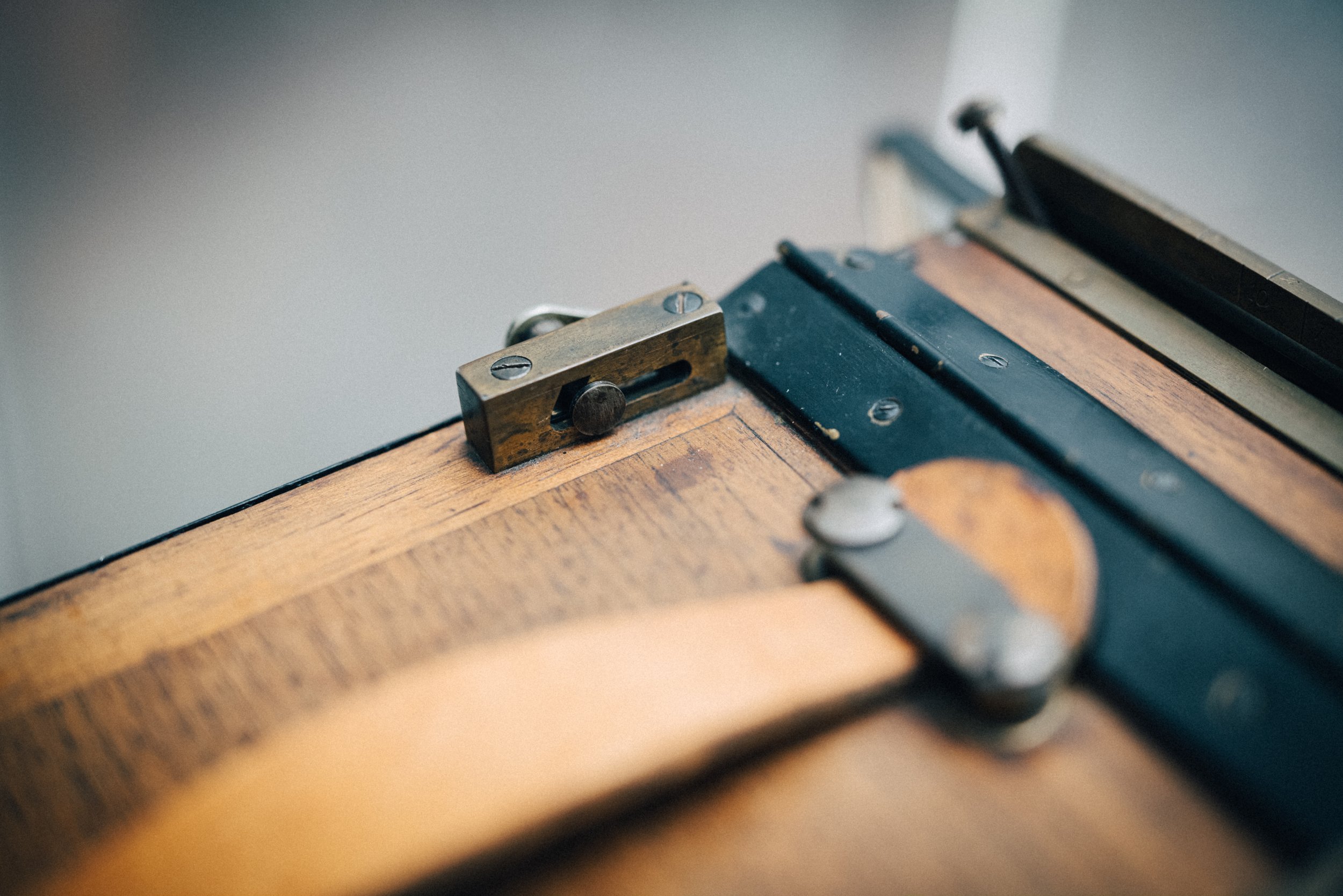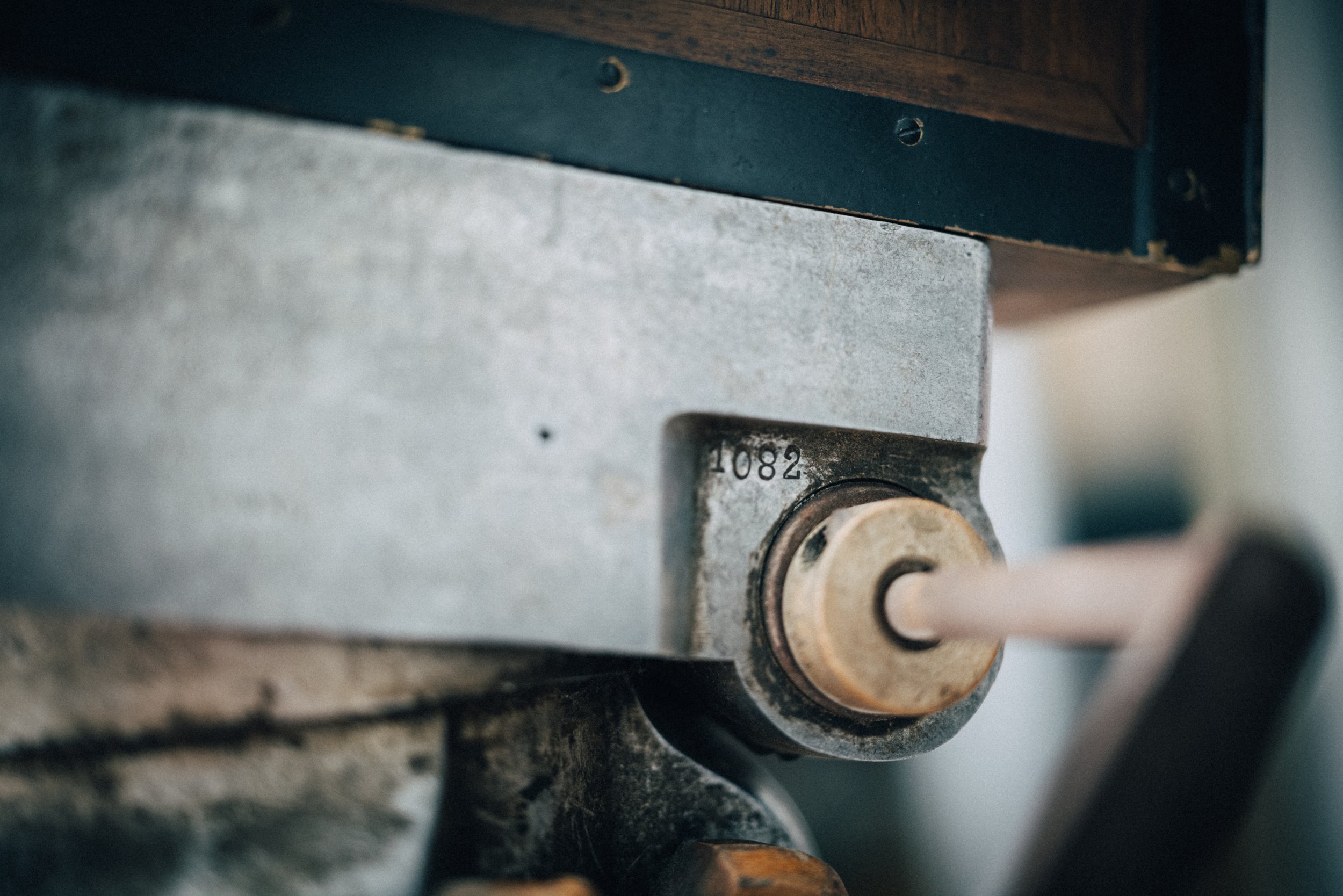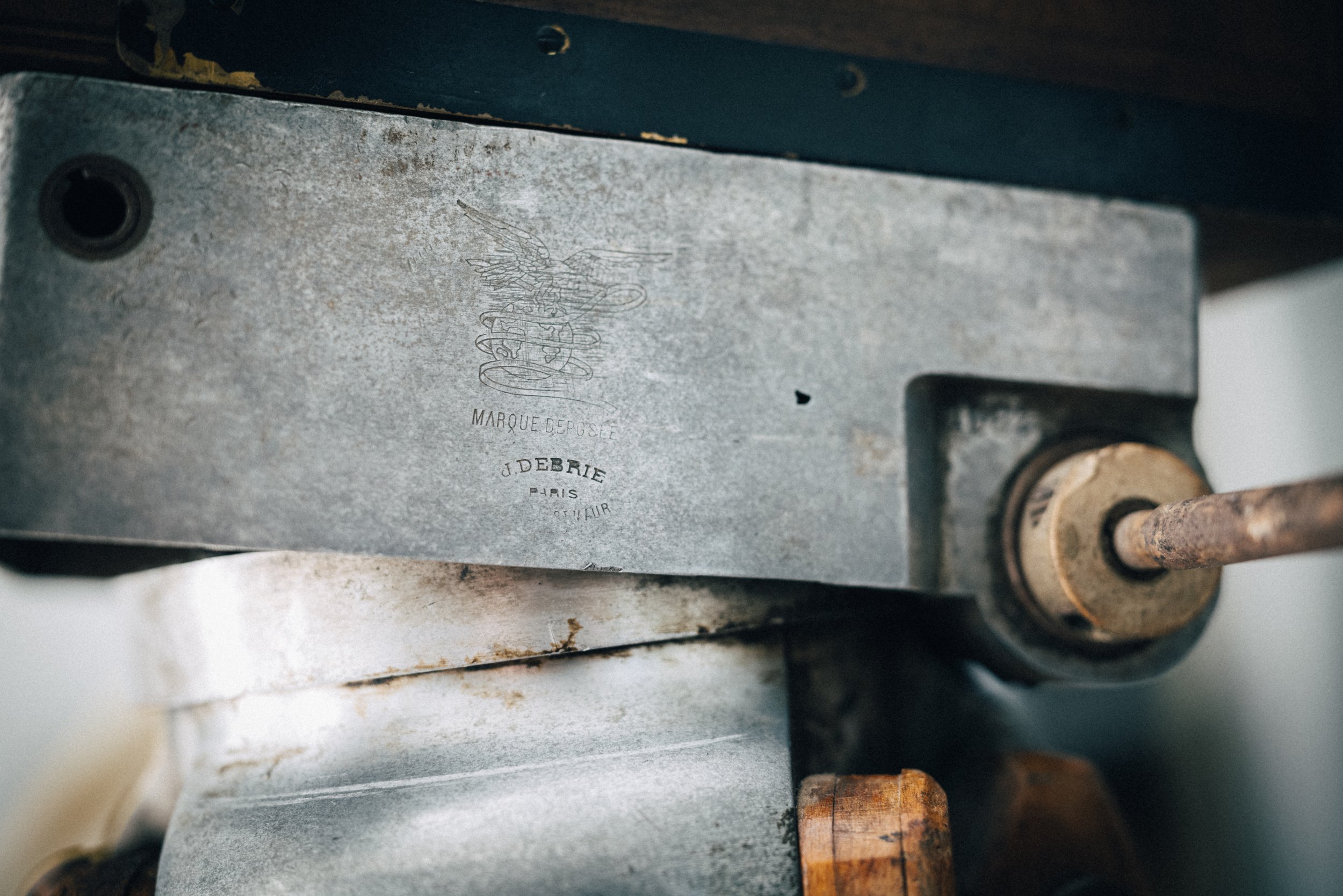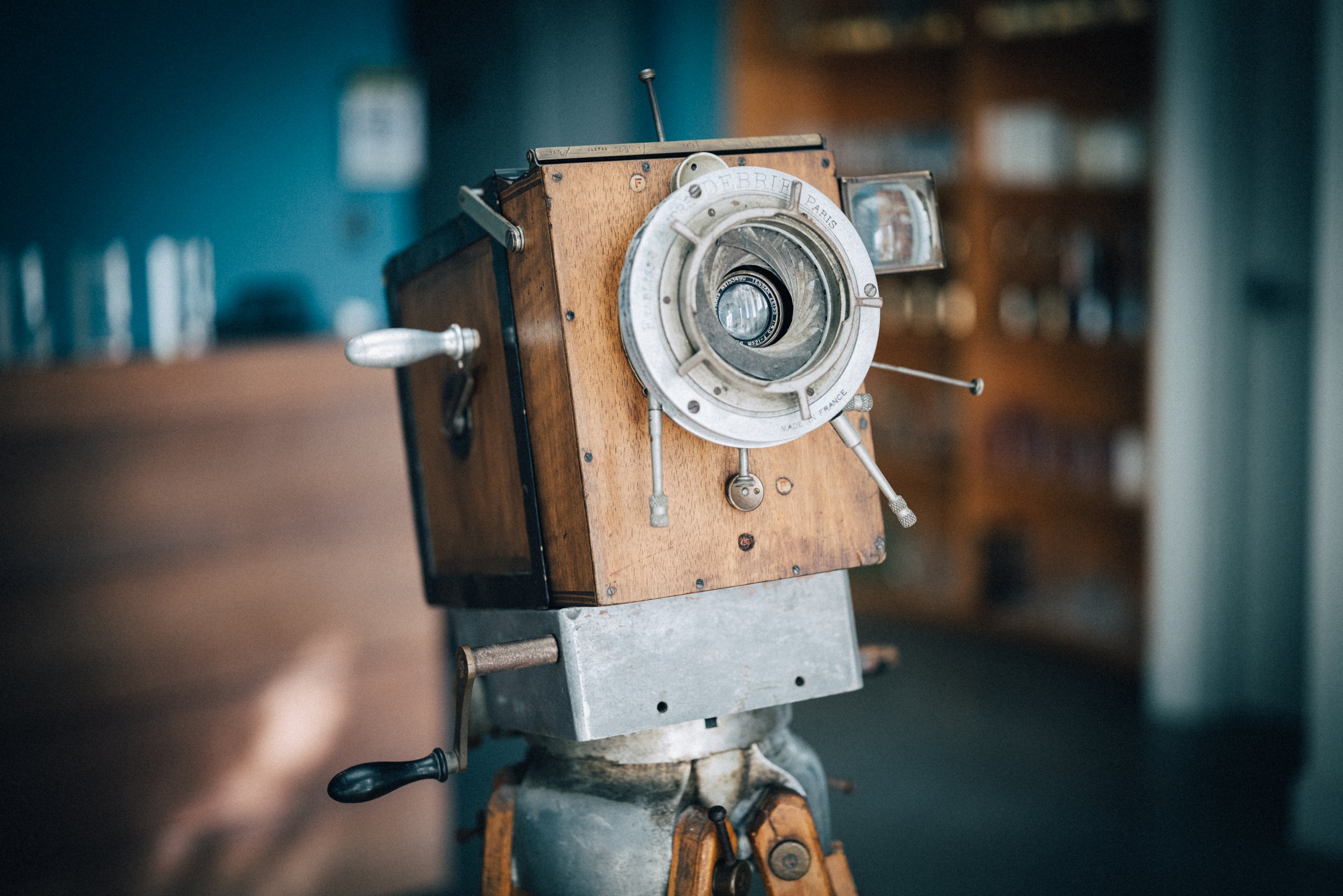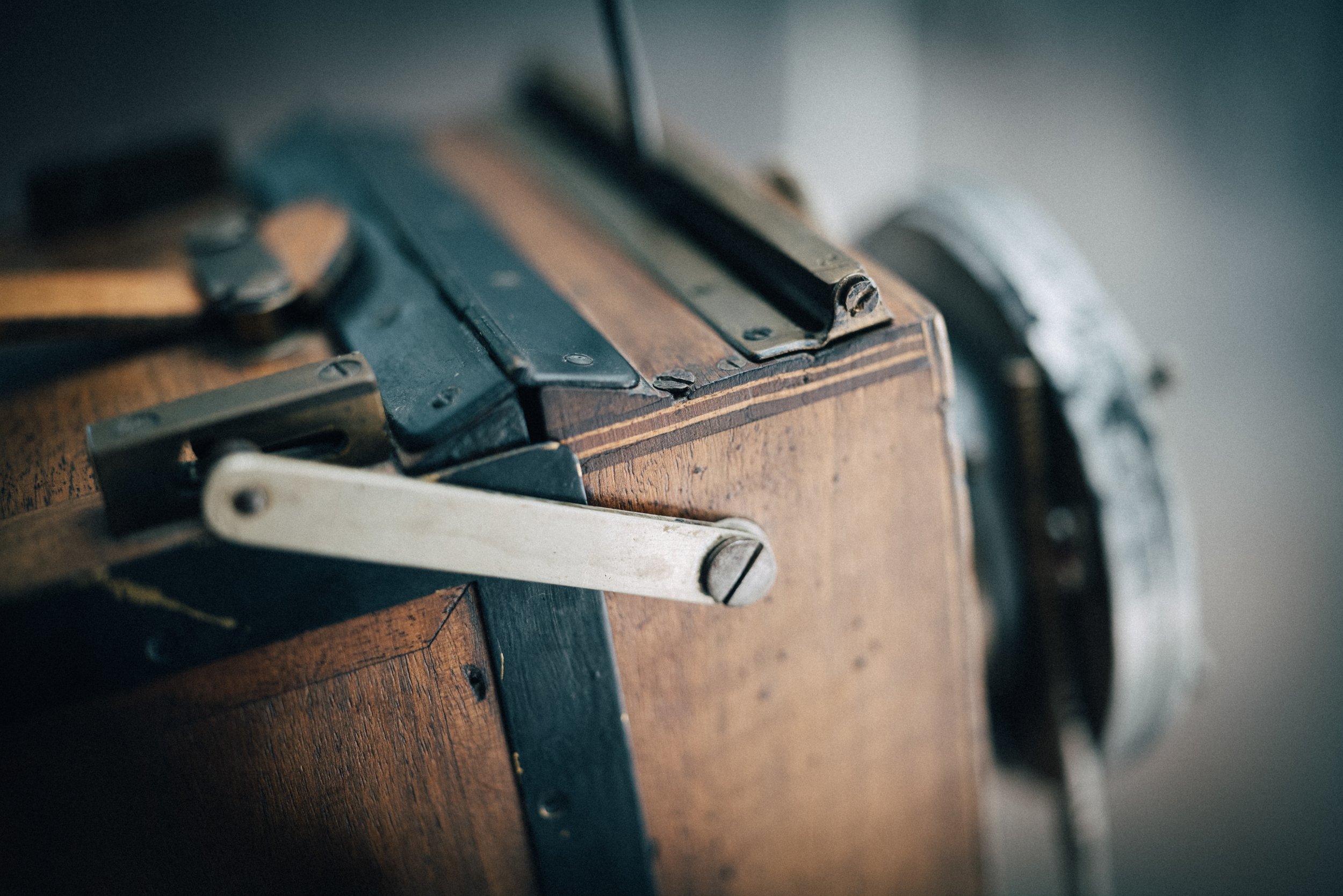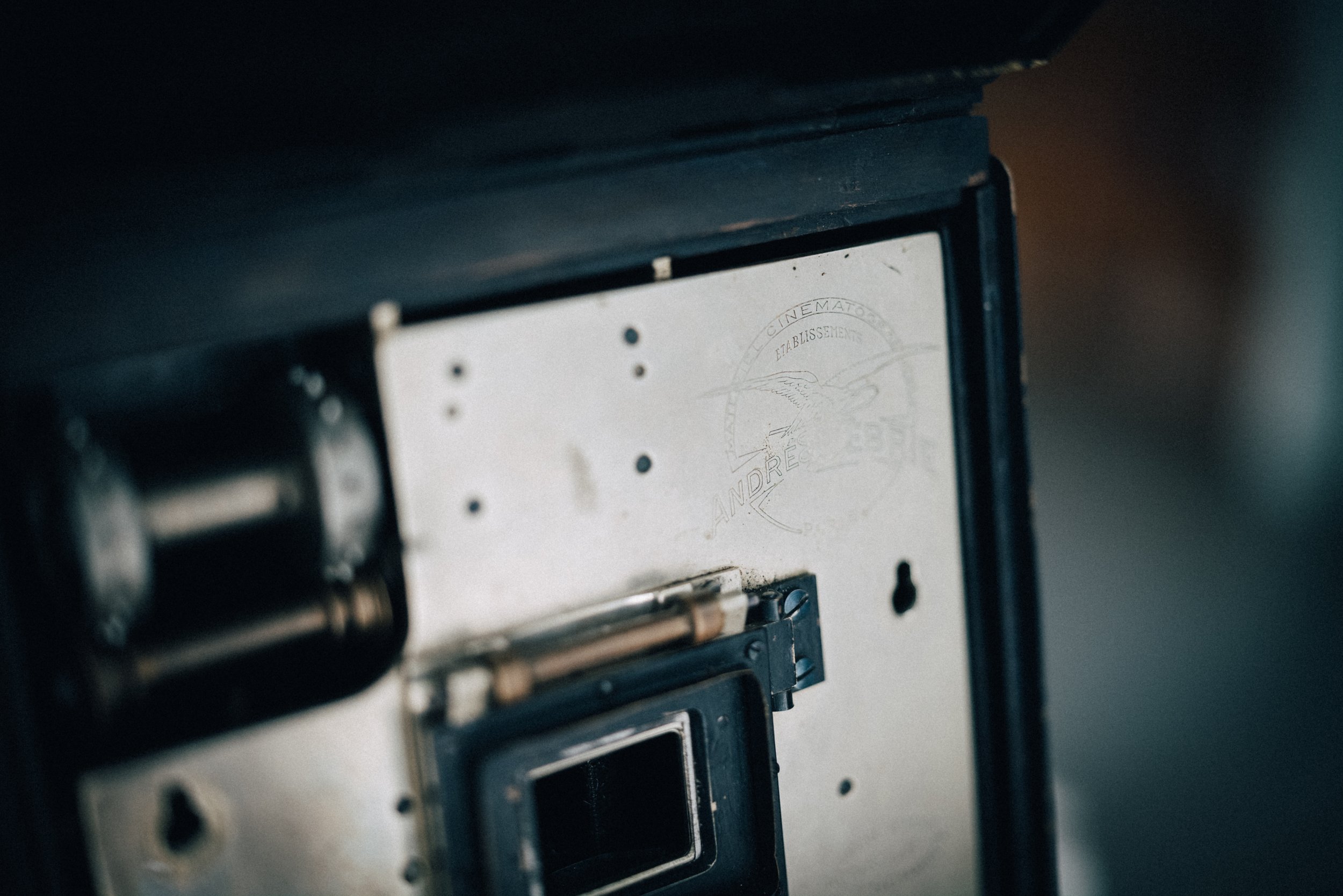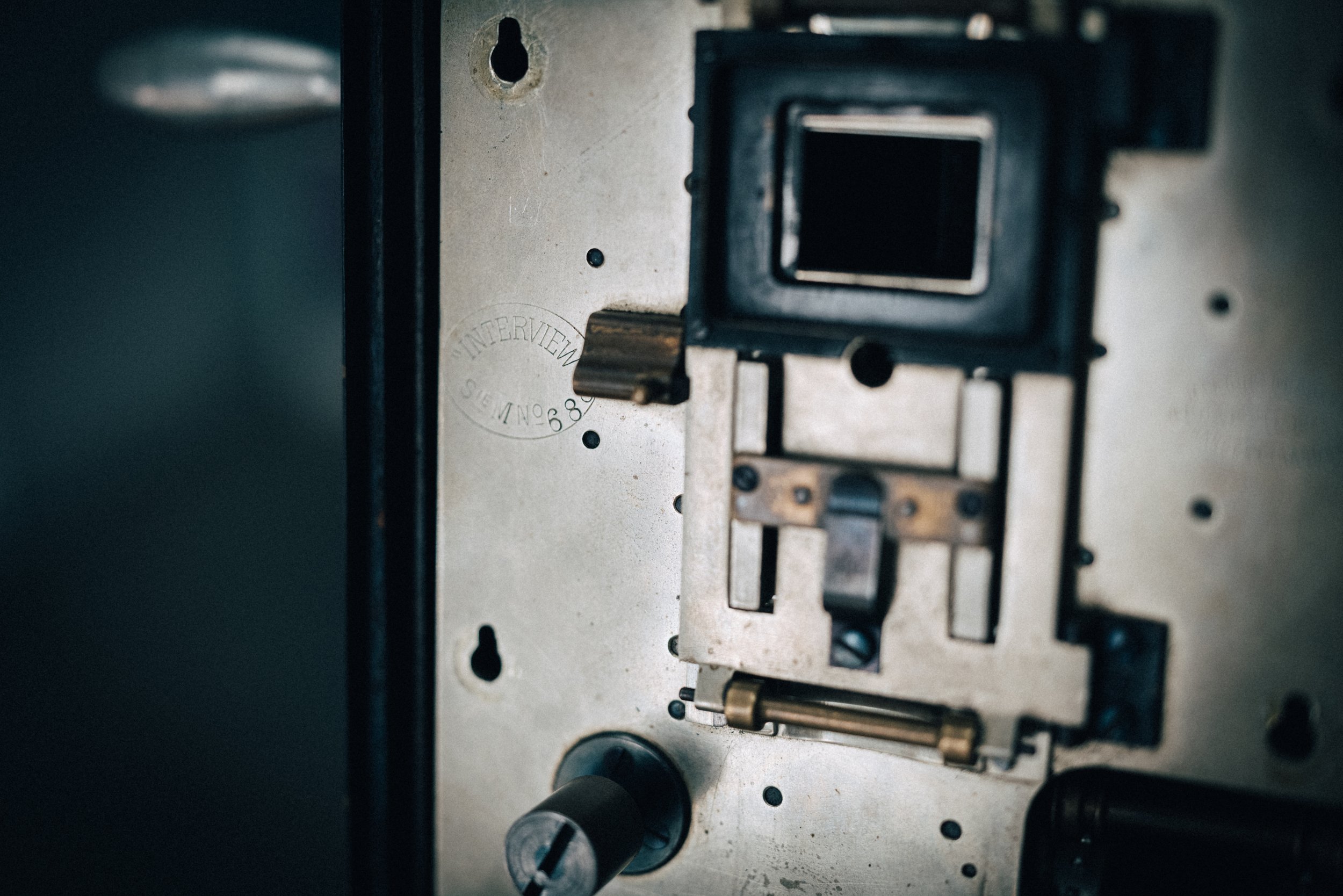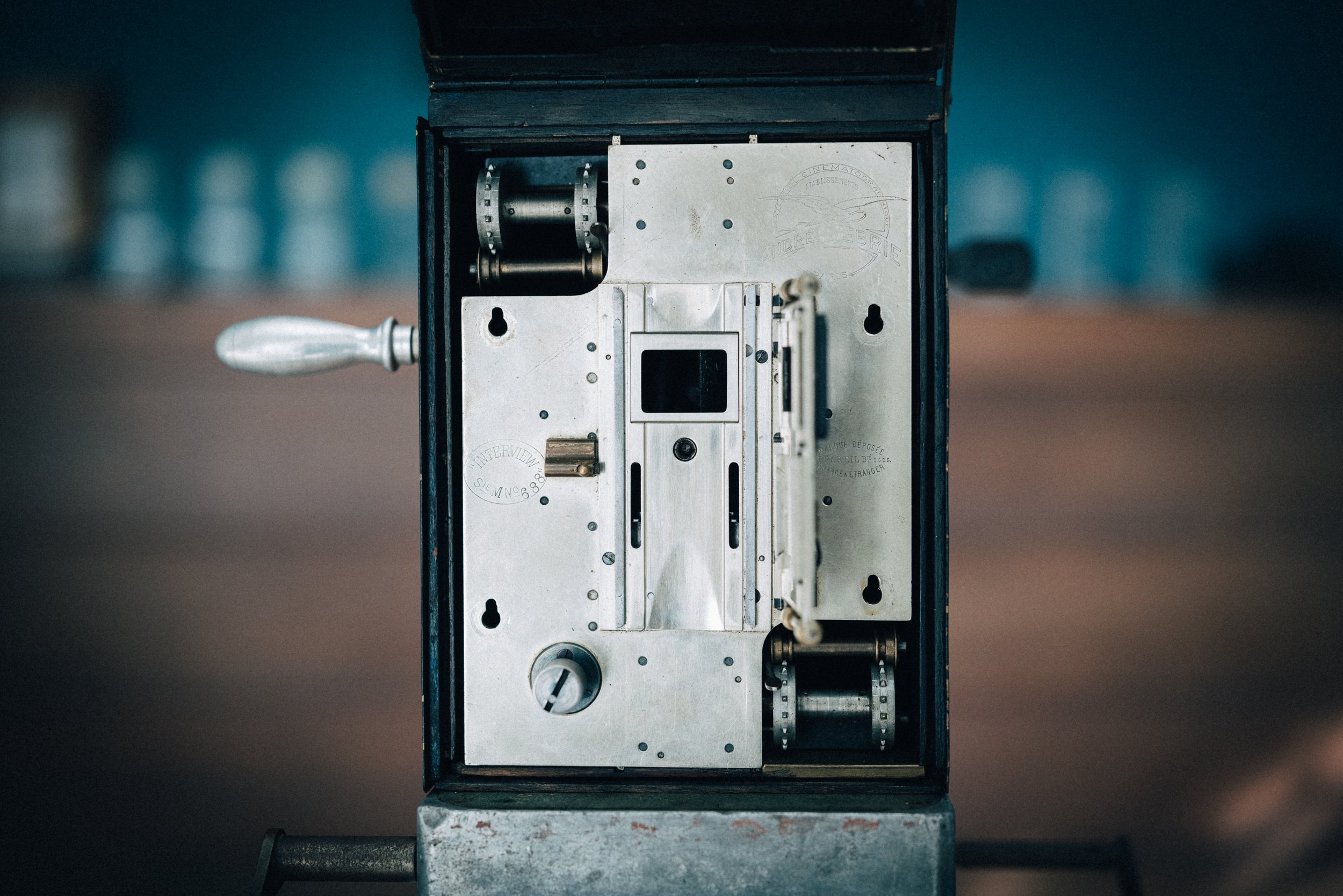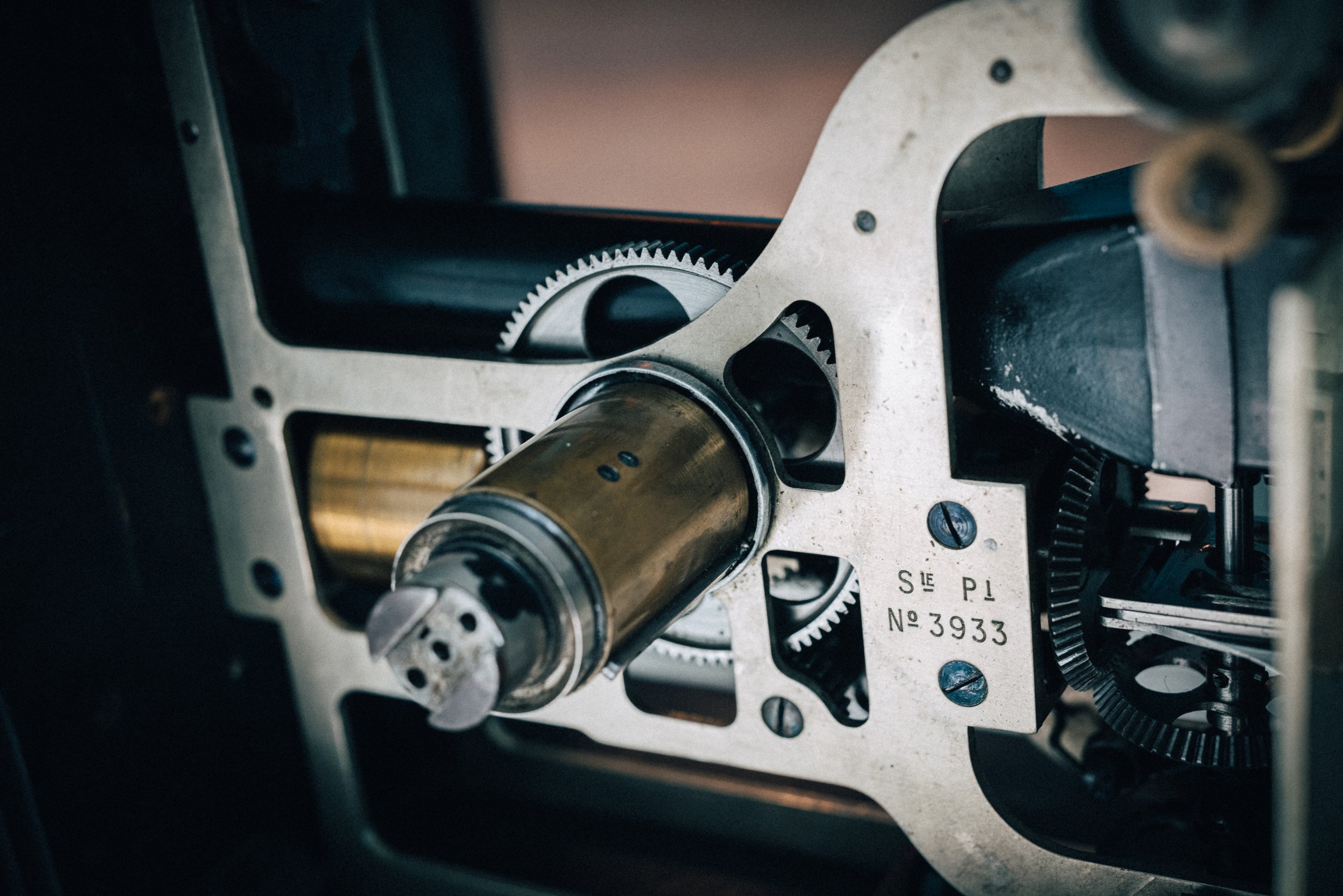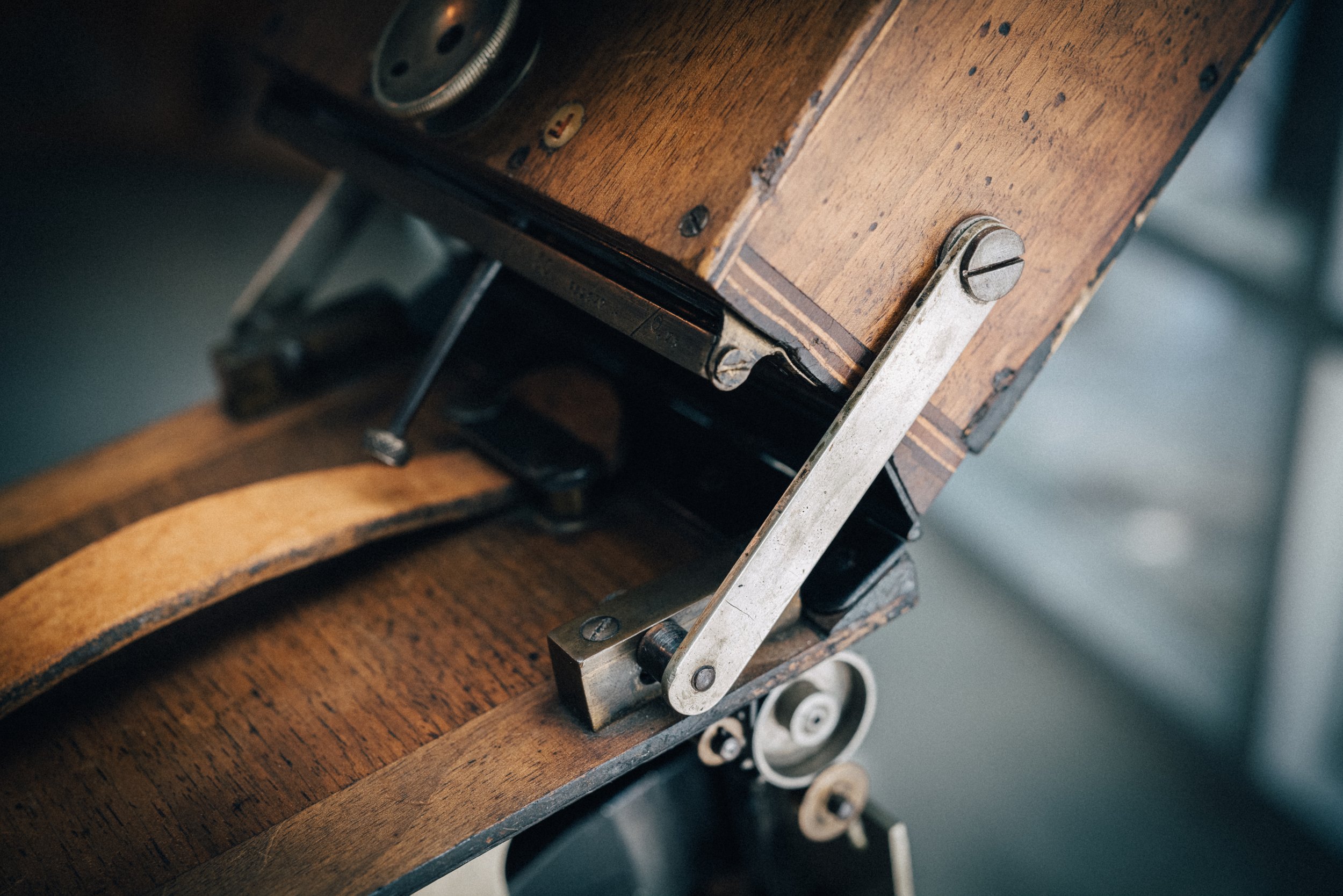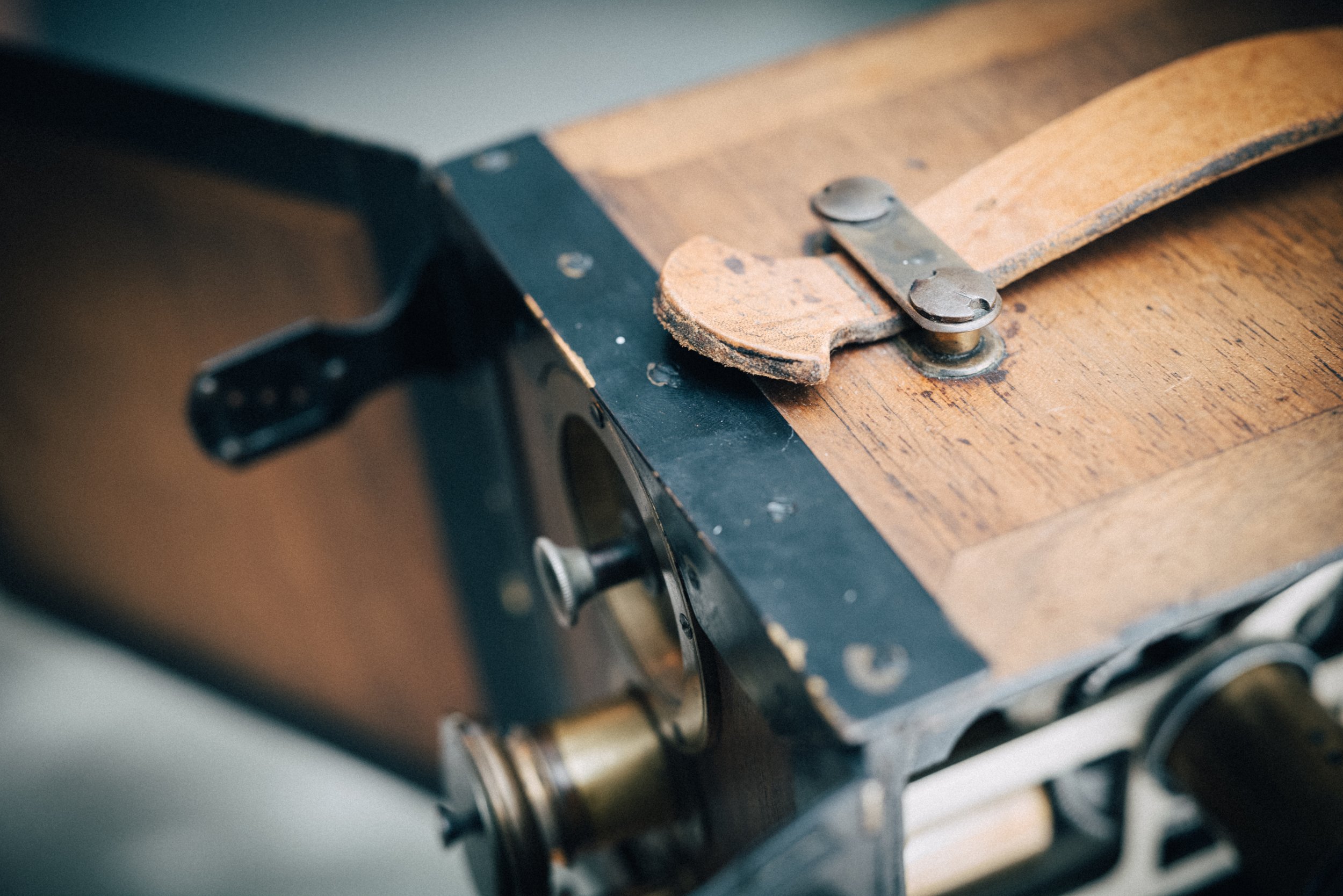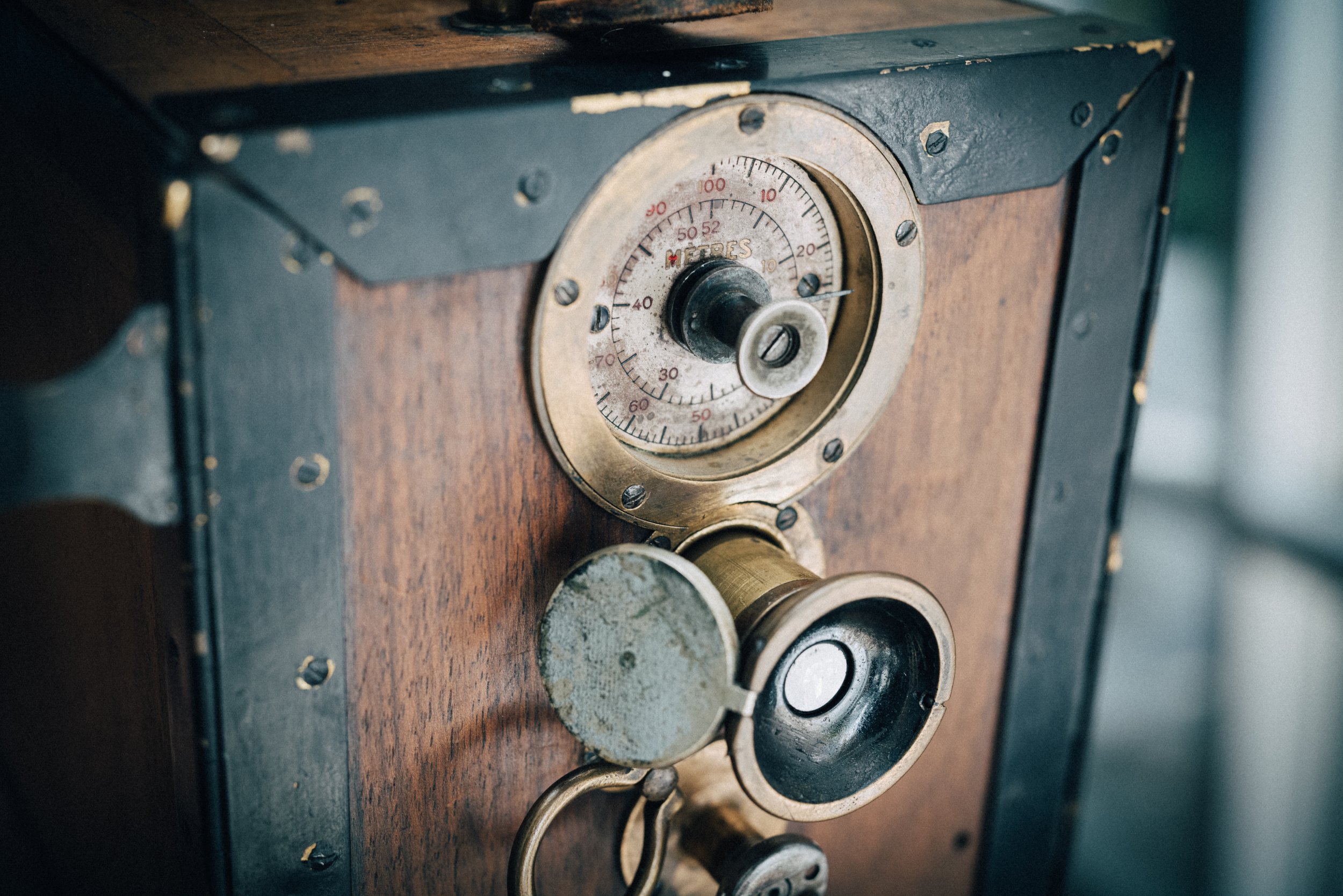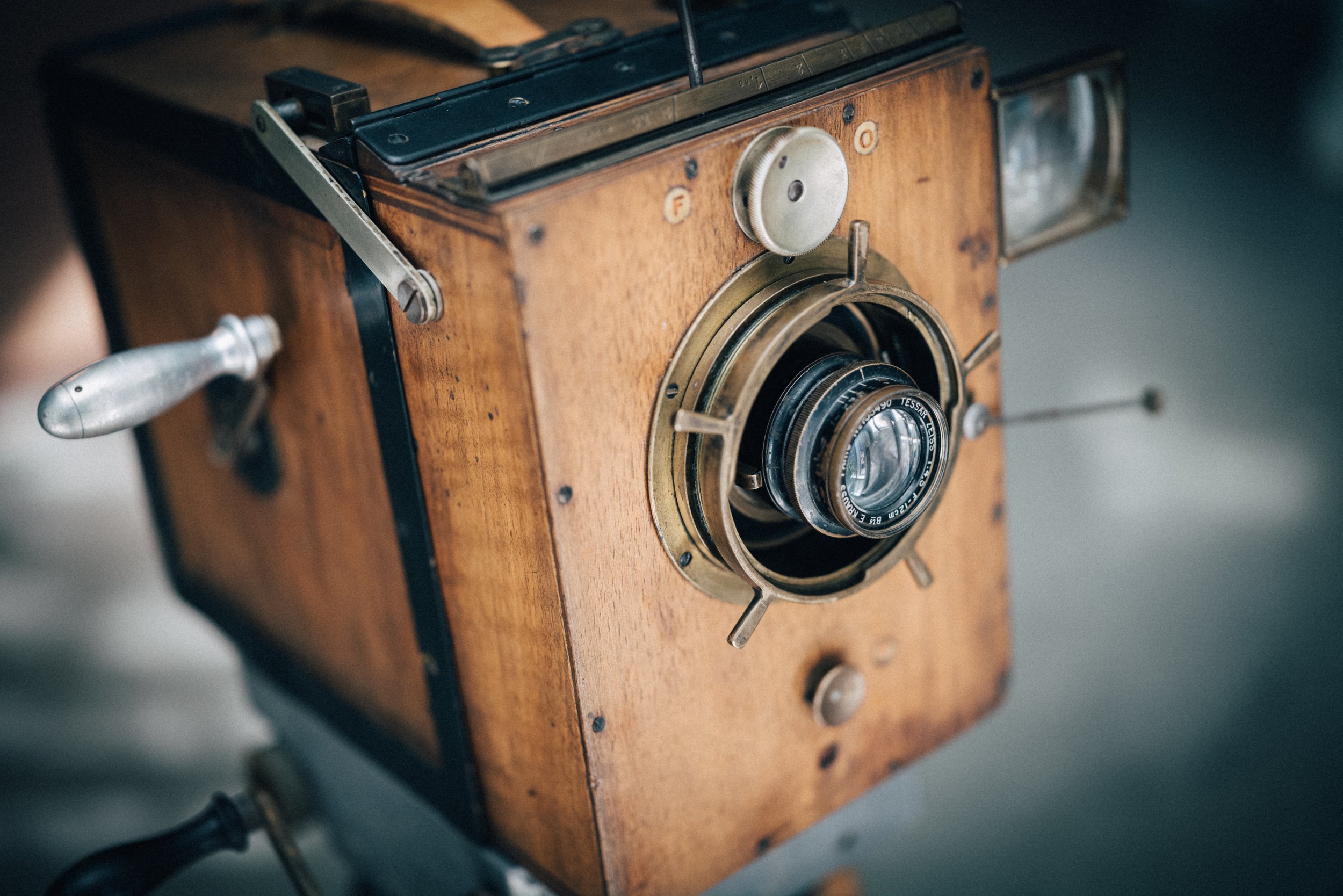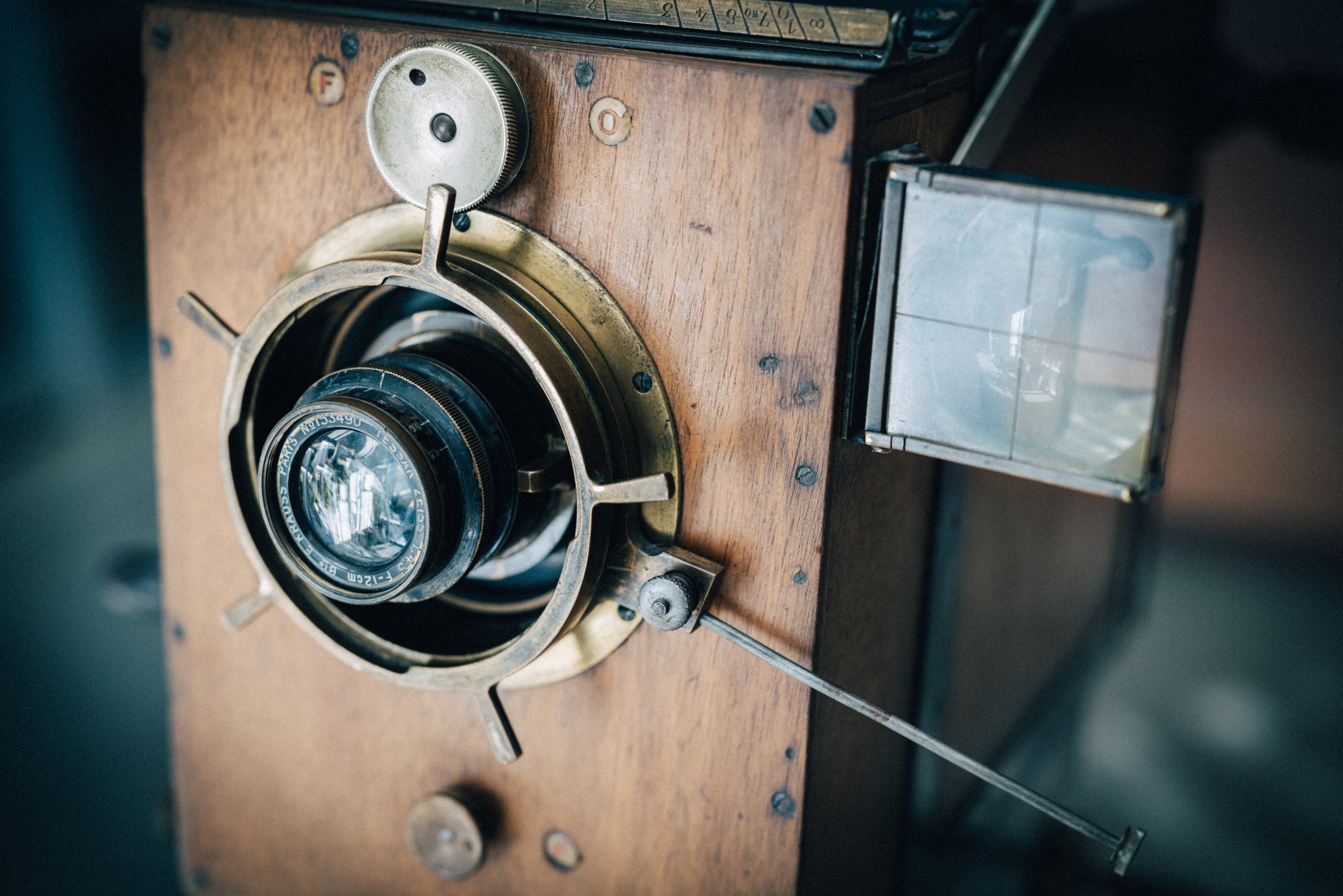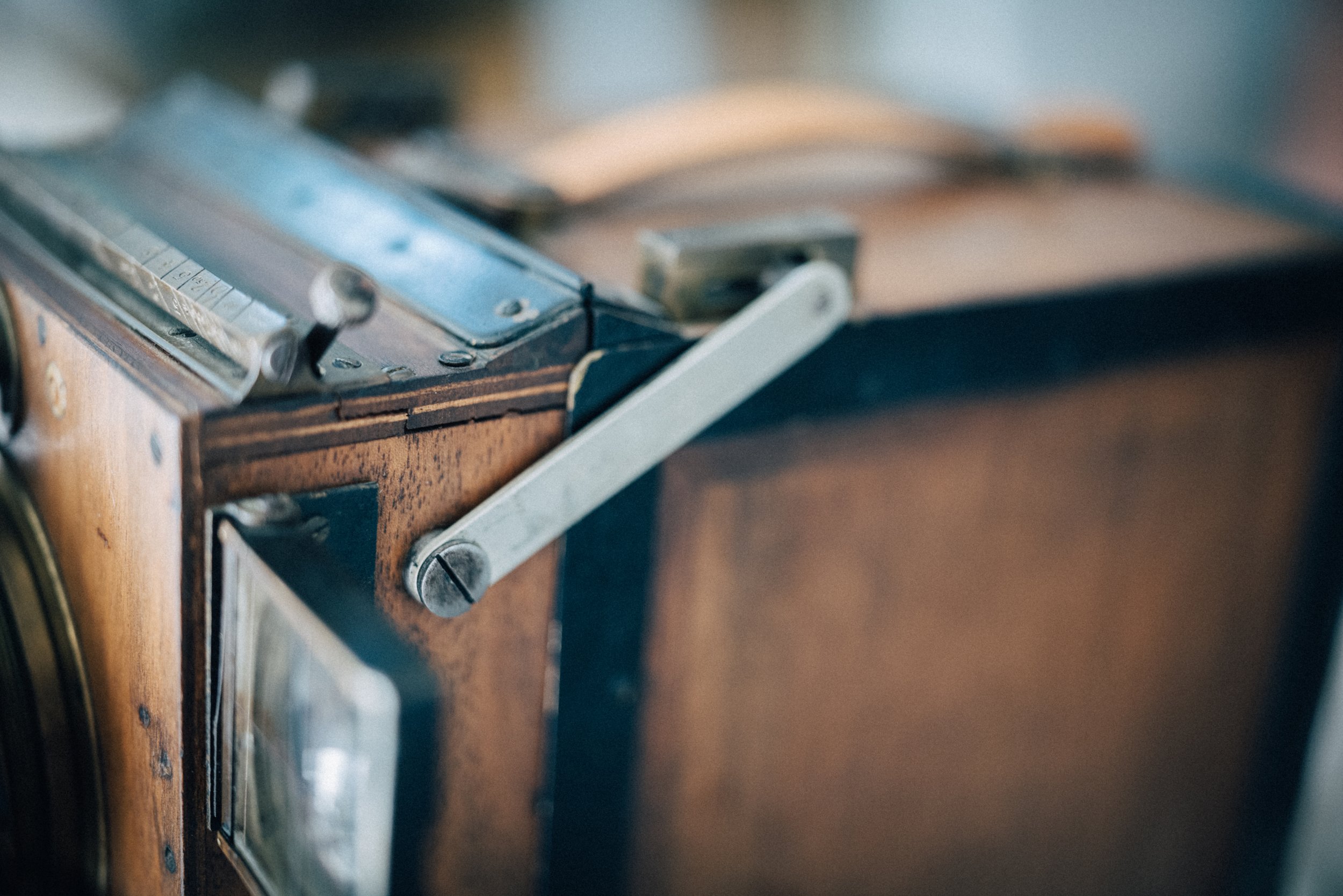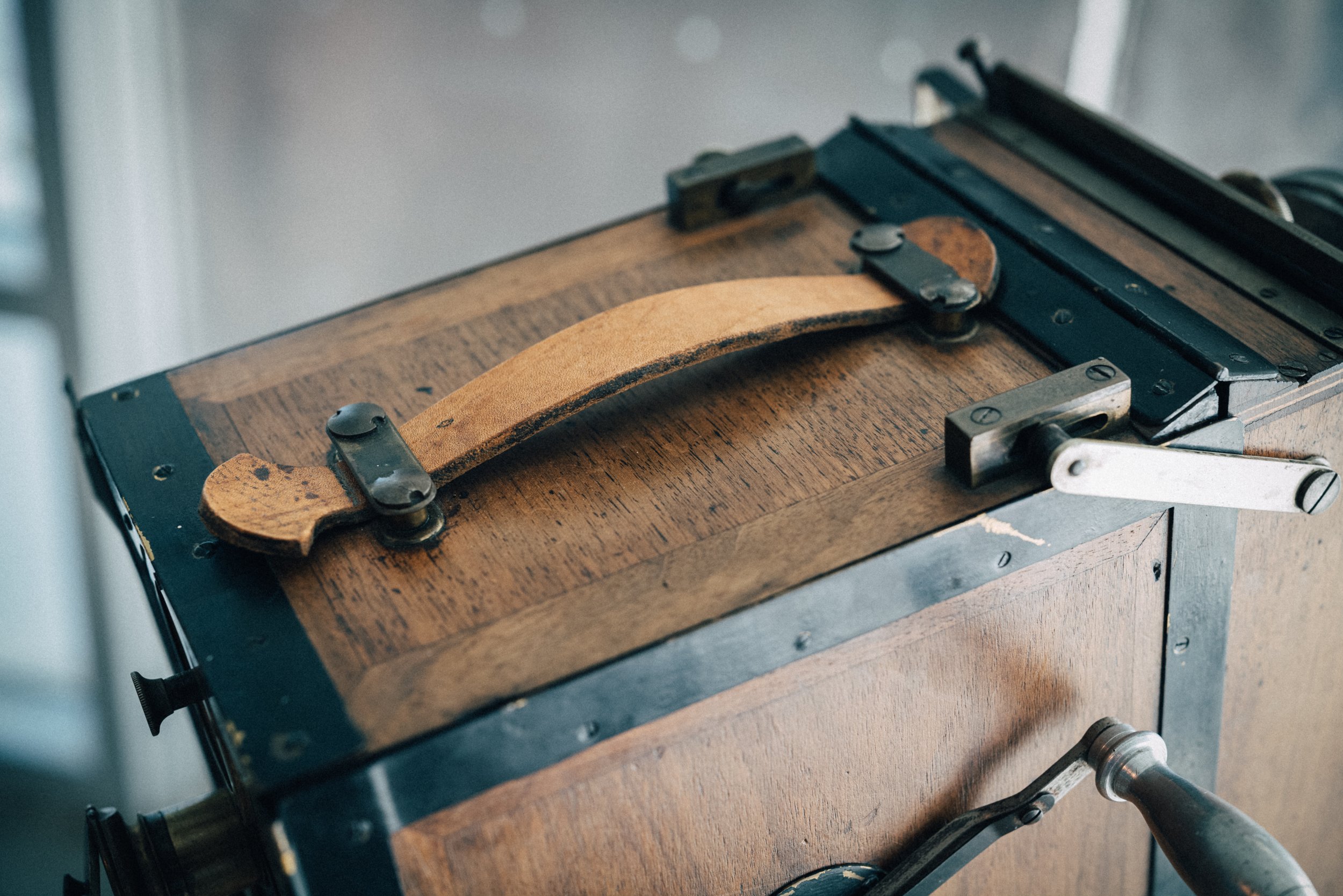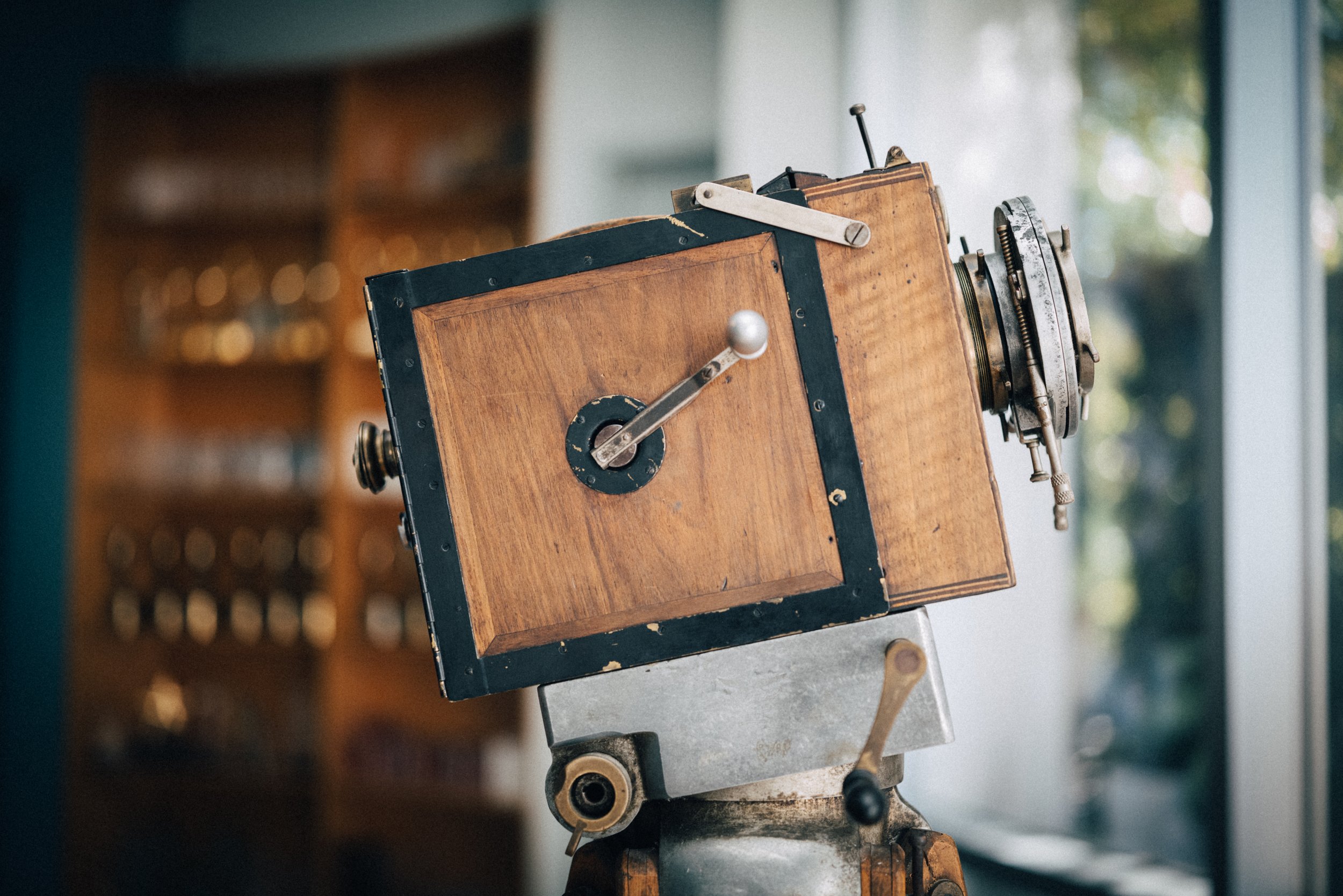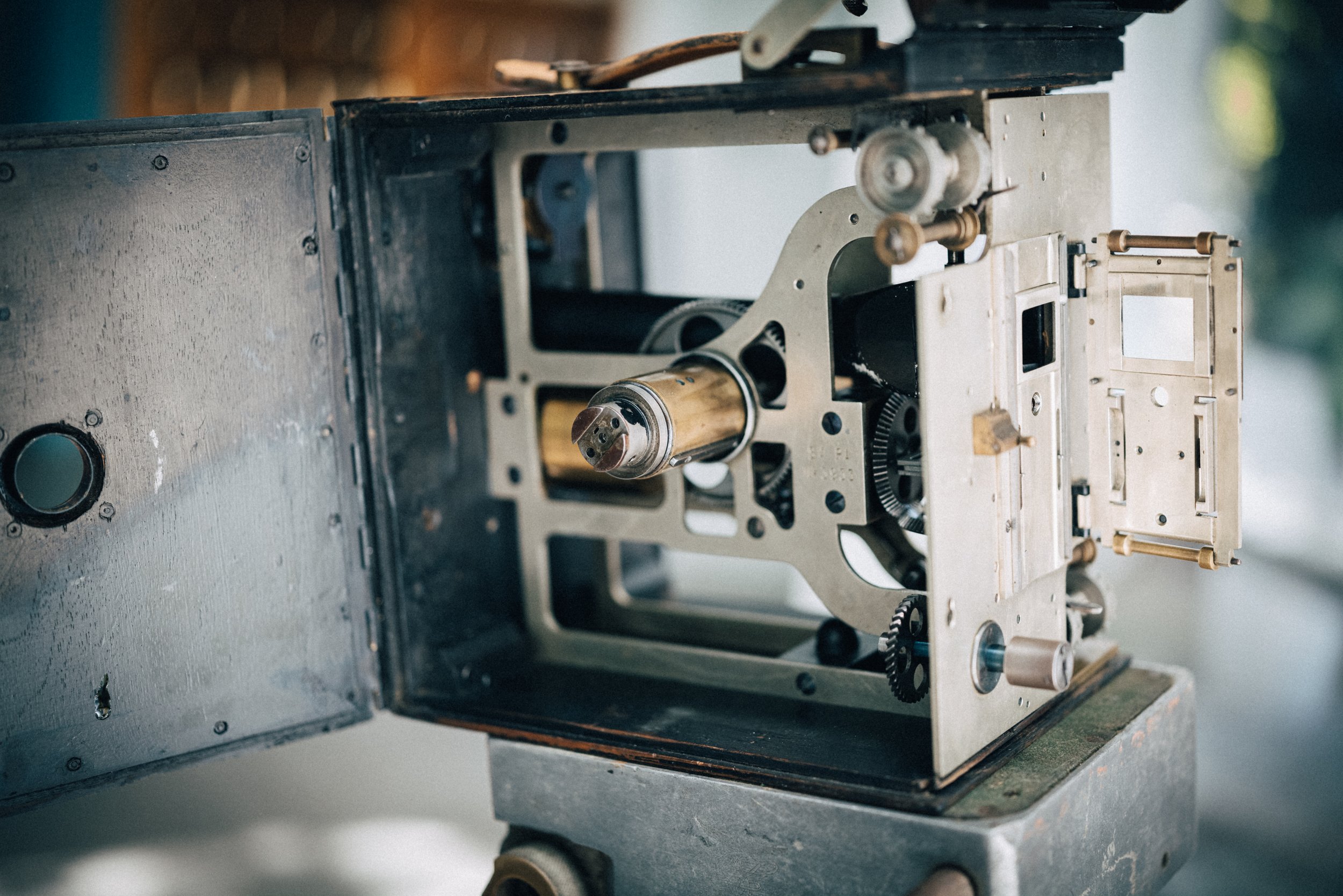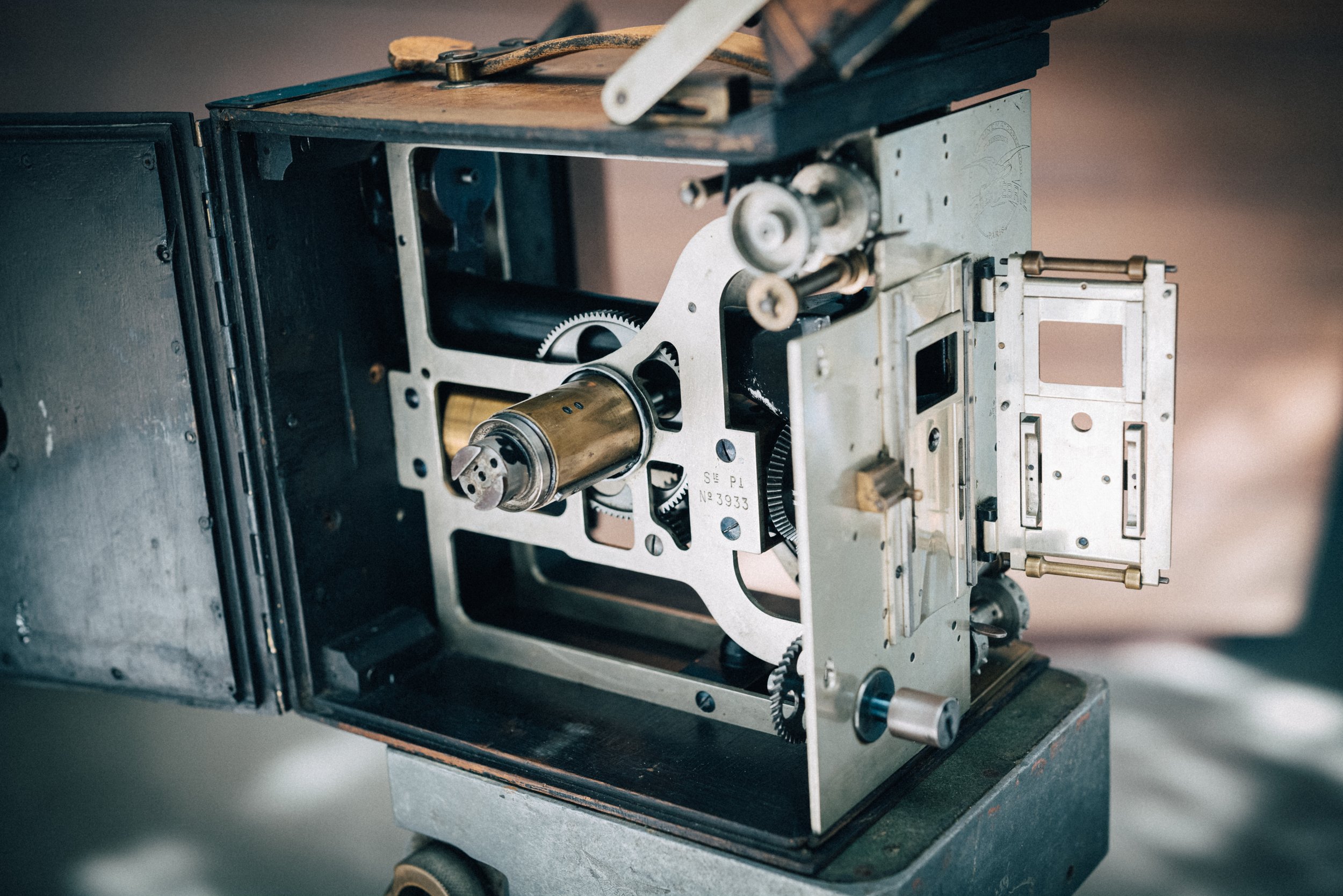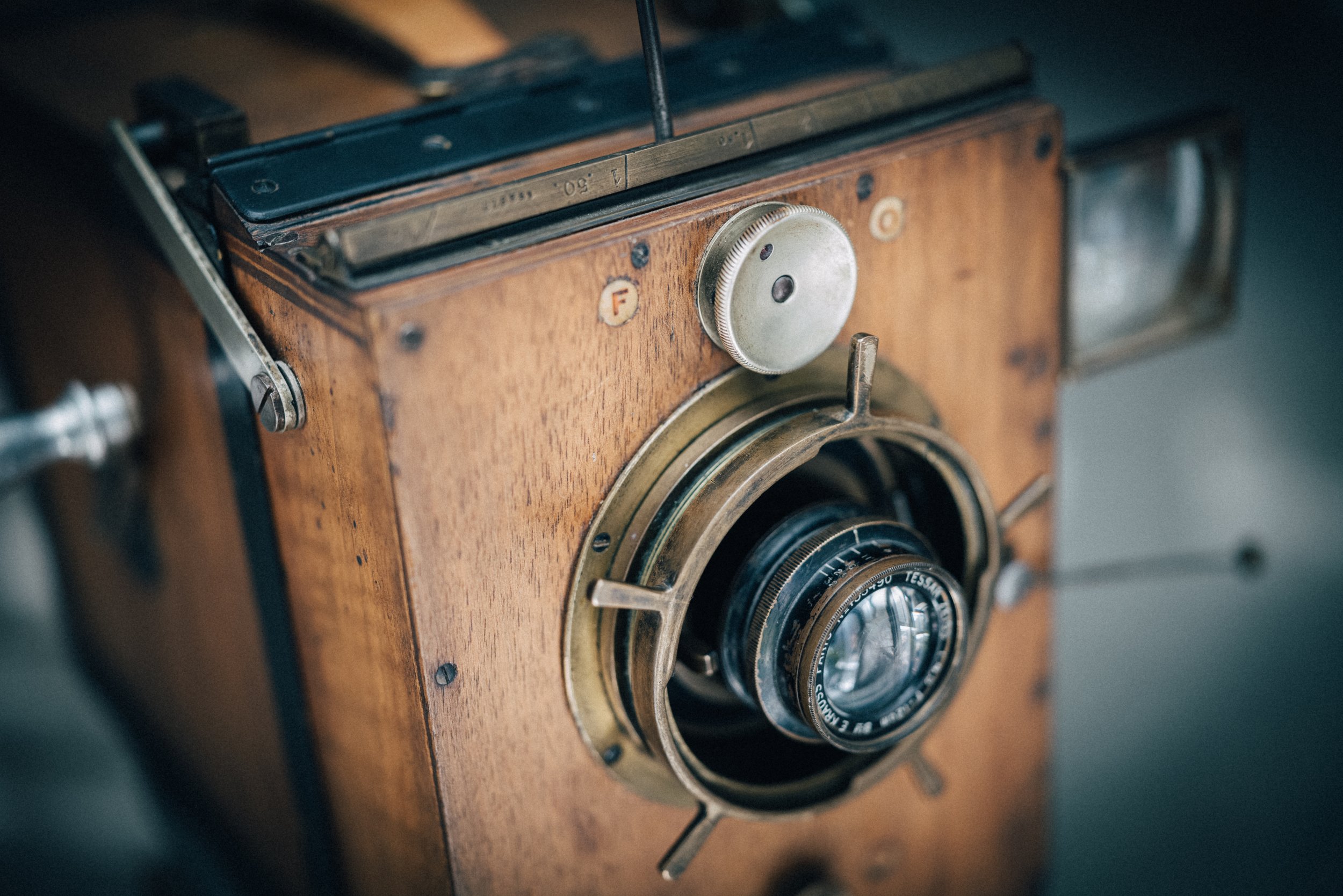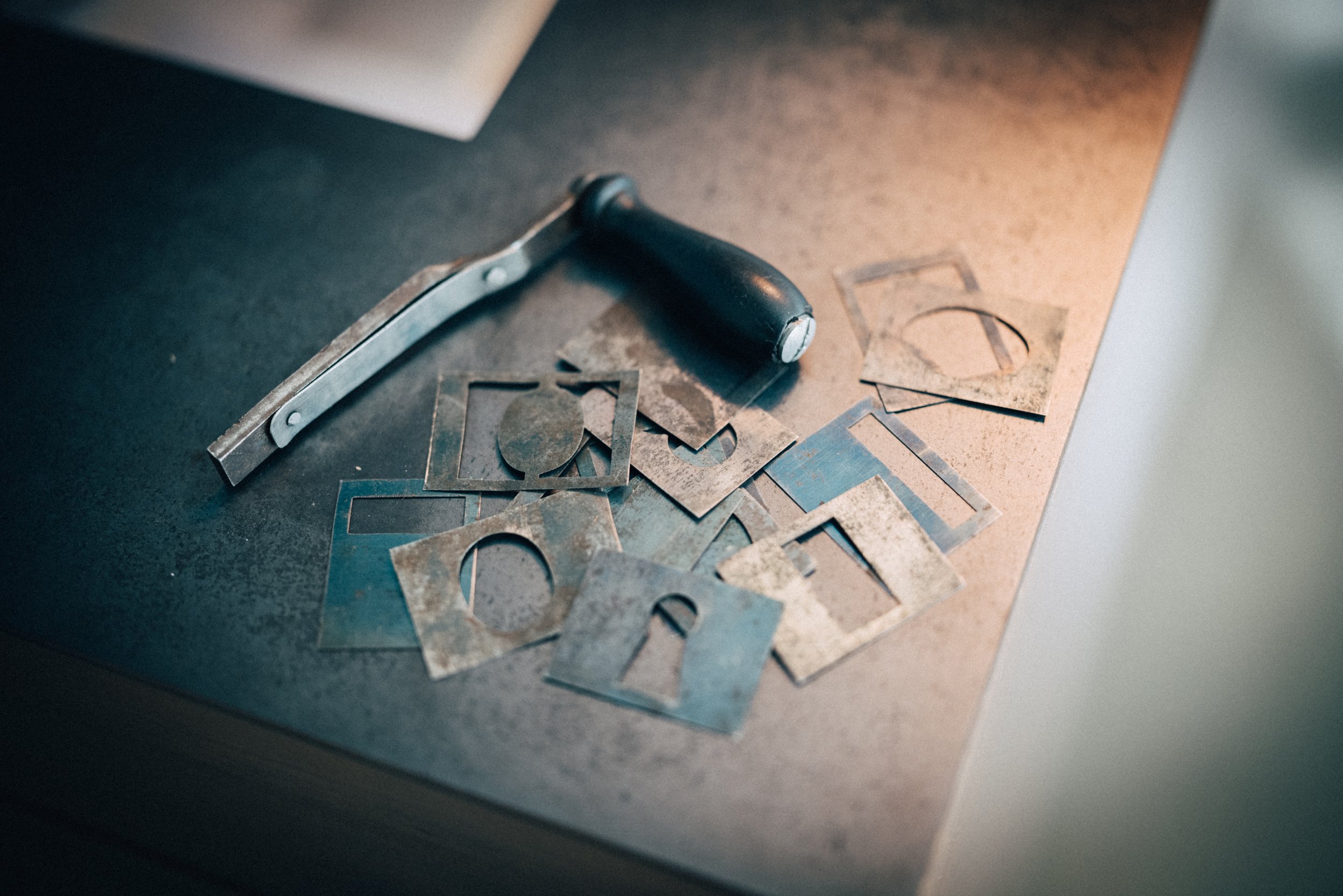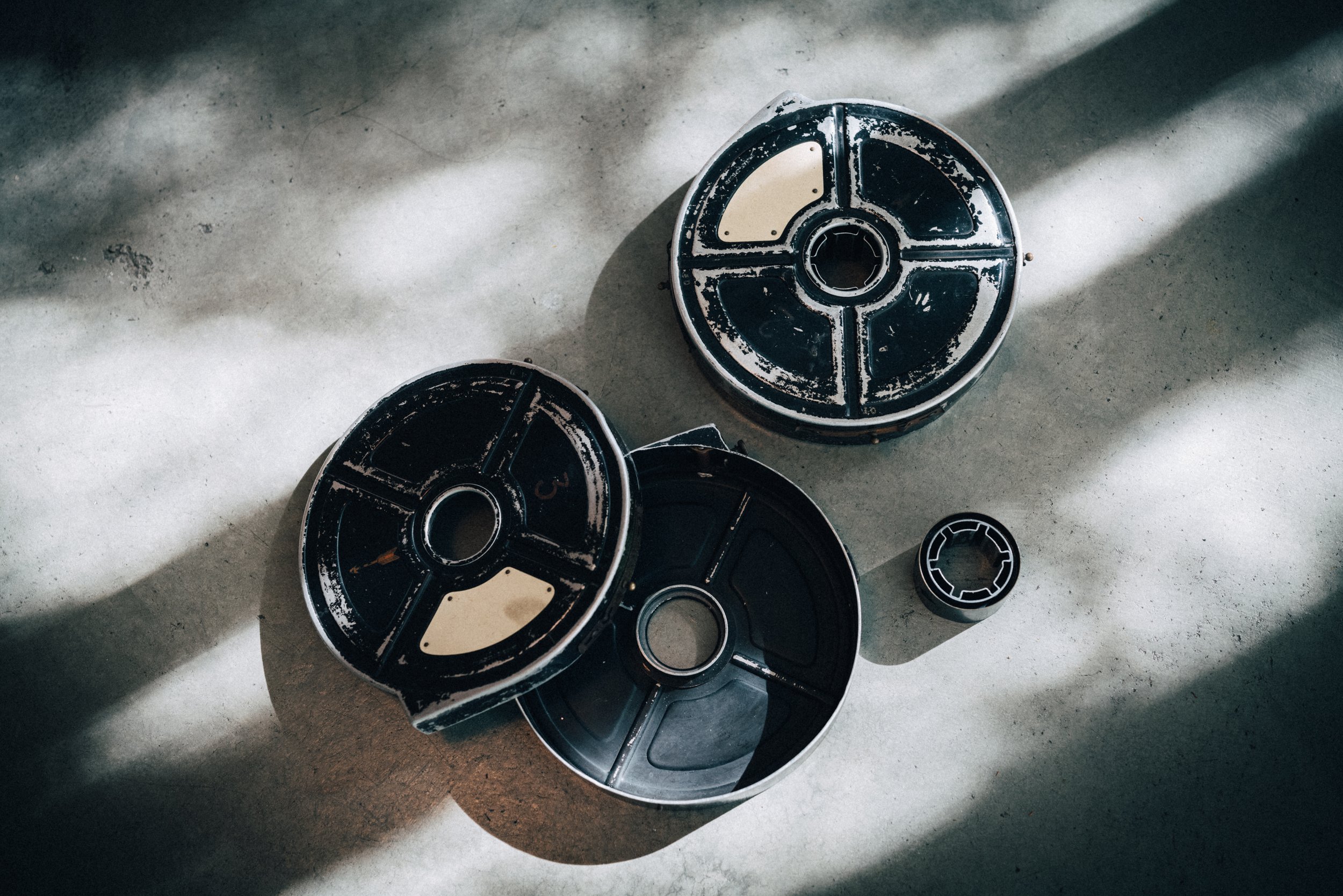Debrie Interview 35mm Cine Camera
c.1918 A. Debrie Interview (type d)
Debrie ‘Le Parvo’ Cine Cameras
The Debrie Le Parvo 35mm motion picture camera was developed in 1908 by Joseph Jules Debrie, and built by his son Andre Debrie. They set out to produce a more portable, compact and versatile camera than anything else on the market.
The Parvo line included several models and variations, this camera is the “Interview” model, Type D which was first released in 1918 and offered a lighter, less expensive option designed for amateurs and reporters, but it quickly became very popular among professionals due to the lower cost and weight.
Andre Debrie models.
The Parvo line all used the same film magazines. The cameras held two internal 120m (400’) magazines which transported 35mm film from the load magazine, through the gate, to the take up magazine in a coaxial movement giving the operator almost 6 minutes of film when cranked at the standard 16 frames per second.
Andre Debrie le Parvo- Film Loading
New models were constantly released with improvements and additional features, which made the camera extremely popular, especially in Europe where the camera was manufactured well into the 1930s.
The internal frame in all the Parvo camera is a unique design.
Joseph Jules Debrie
Établissements J. Debrie
Joseph Jules Debrie founded Établissements J. Debrie in 1898 in Paris, France. Andre Debrie took over his father's company in 1918. In 1992, Etablissements Andre Debrie merged with MLC to form CTM-Debrie which still exists today.
In 1908 he patented and later produced a small cinematograph camera which he called le 'Parvo' meaning compact in stature. The cameras were very well designed and smaller than the competition. Shortly after its introduction, Debrie developed an additional viewfinder, allowing viewing directly thru the film, similar to Ernest Moy’s finder which was produced several years earlier for their cinematograph camera. It was designed in the form of a sliding extension tube with an eyepiece at the end, which when pulled out magnified images viewed through the film. Over the years many addtional features were added to keep up with studio demands: so models became progressively more advanced.
The first models were produced with Mahogany wood bodies. The aluminum bodied models started showing up early in the 1920’s. By then they had produced over a dozen different models and variations, including a few special models like the Parvo GV (Grand Vitesse) models D F & G (C.1925), Parvo model 'T' (C.1930) and the Super Parvo series V2 35mm sound camera (C.1932)
All the models included several accessories and upgrades. The lens mount was an upgrade which allowed adding additional accessories like the included Andre Debrie Iris…according the Debrie Catalog the “Iris of 90 m/m”
“special use of this accessory offers our customers many advantages, the main one being to have an iris with one-piece steel lamellae and giving absolutely complete closure without the use of an additional small lamella.
As with most of our accessories, this iris includes a clamping ring at the front and at the back.”
Debrie Interview, c. 1918
The Interview first appeared in 1918. It was a simplified Parvo apparatus with an exterior wood body. It contains two coaxial 120 meter magazines and weighs only 7 kg. Various models or variations were eventually produced including;
“Interview” #38 name plate. Courtesy of Mark Pollio
Interview- type A
The outer wood box is made of plywood in 5 thicknesses to withstand temperature fluctuations and climate changes.
As with all the Parvo cameras, the moment and film transport are independent of the outer case. The internal aluminum frame is a complete module that contains all the working parts of the camera. The exterior wood box protects the interior and contains all the external hardware, like the lens mount, top handle, hinges, doors and rear ports
The shutter mechanism is mounted inside the front lid. It is mounted via a small bracket on the top and a latch on the bottom. The latch has an external knob on the face of the camera to remove the shutter mechanism. The lens is fixed in a special mount that allows for focusing via a rod that is contained in a slot on the top of the camera body. In front of the slot is a rotating brass rod with the focus scale.
Above the lens, another knob opens the camera front and on each side of the body are the doors that can only be opened when the front is lifted. The door on the right has a hole for the hand crank shaft. On the left side, the optical finder is hinged to lay flush with the body when not in use.
On the rear of the body there are 5 features:
Footage meter with two dials, one for frames and the outer dial is in meters for film used
below that is the thru the film focus tube
The small brass lever with brass ring is the film punch
Single Frame shaft with hand crank
an optional level
Interview- type B
This version is exactly the same, except that on the lens port, there is a special collar which allows you to attach various accessories such as a lens hood or an iris for faders, etc.
Interview- type C
This model has the “Professional” front which includes a bayonet lens mount for rapid lens changes, focusing and iris diaphragm, capstan collar and attachment system.
Interview- type D
with “Professional” front and friction allowing reverse.
Interview- type E
with “Professional” front, friction allowing reverse gear and motor for turning the crank.
Type E
Interview- type F
with “Professional” front end, friction allowing reverse, motor for the crank, window presser and roller claw presser, added a “Parvo” speedometer and mounting points for the motor. Type F is mainly used when shooting on a tripod.
Interview (type D)
Interview with optional Iris Fader attachment
Rear viewing port allows for critical focusing.
Debrie Interview (type D)
The camera shown here is a Interview Type D. The camera is serial #688 and was produced sometime after 1918. The camera was found with its original Debrie tripod and head, upgraded lens mount, external Debrie iris fader and its original Krauss Zeiss Tessar f3.5 5cm lens no. 152870 and Krauss Zeiss Tessar f4.5 12cm lens no. 153490.
The camera also included custom focus and iris scales as discussed below, a set of frames, a spare hand crank handle and two 120m Film Magazines with original proprietary film cores.
The film cores have a built-in light trap to prevent light from entering the magazine and they were upgraded to include additional slots to make it easier to insert the film magazine into the body.
Custom Lens Specific Focus Scales
One of the unique feature of the Parvo series are the custom brass focus and iris scales mounted on the body. This Interview model only has the focus scale, but the iris scale was also an option. The brass bar rotates to give you four different scales, one for each lens or you could create a close up scale and a distance scale for your lenses for more precise work. If you ordered the combo iris and focus scale it included a gear that rotated both scales together.
The brass focus scale runs along the top front edge of the camera body. Immediately behind the scale is a slot to access the focus mechanism. A small rod runs thru this slot and screws into the focus mechanism. Focus is adjusted by sliding this rod left or right along the brass focus scale.
Focusing rod and custom focus scale.
This Interview was ordered with 3 lenses and lens scales for a 35mm, 50mm and 120mm lens all with matching serial numbers. The focus scale on this camera also contains the matching serial number for each lens.
Custom lens specific focus scales for 35mm, 50mm and 120mm lenses (click to enlarge):
J. Debrie Tripod and Head
J. Debrie Cine Tripod
The original J. Debrie tripod and head, Model A (serial #1082) was found with the camera. It has both of its original cranks. One for the tilt and one for the pan. The extra wide base is made to fit the le Parvo or Interview body precisely and it has a large tie down knob directly under the head for quick mounting. It also includes a heavy duty leather shoulder strap attached to the legs with adjustment buckles. The Debrie tripod and heads are rarely seen, this one likely pre-dates the camera as its stamped J. Debrie. It is a beautiful example of early French industrial design.
J. Debrie Cine Tripod and head
The hand-cranked Le Parvo was at one time the most popular European made camera. Even in the early 1920's, the Le Parvo was the most used camera in the world. The design and movement was also utilized by other manufactures, including Ernemann and Askania. By 1931 Debrie had produced its 6,000th Parvo Camera.
The Ernemann Kino Model E is one example of another manufacture duplicating this model, its not clear if Debrie made the camera for Ernemann, if Ernemann paid a royalty to Debrie for use of the design (which had its patent registered in 1908 by Andre Debrie’s father, Joseph Dules Debrie) or if they simply stole the design. You can read more about the Ernemann Kino Model E in my earlier blog post here.
Original Patent and Promotional Images
1909 Patent for J. J. Debrie’s Le Parvo
A. Debrie Interview (type d) No. 688 Image Gallery
